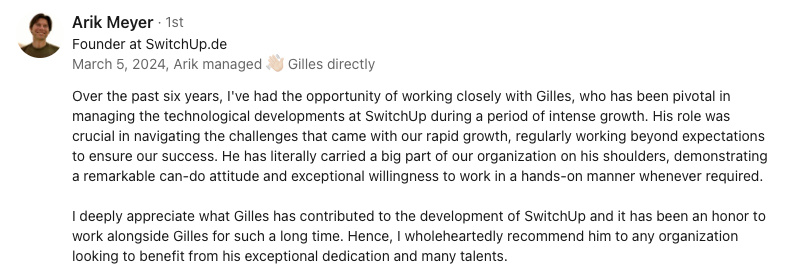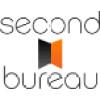Abstract:
The article advocates for tech professionals to adopt a minimalist content strategy centered on evergreen story assets—versatile, timeless narratives like origin stories, signature frameworks, and explainers that remain relevant and require minimal upkeep despite shifts in technology or platforms. It guides readers through creating and maintaining a library of such assets by auditing past work, identifying stories with universal themes and modular structures, and using criteria like adaptability and recurring audience engagement to select the most impactful pieces. Distinctive examples, such as transforming the personal journey from Berlin’s fast-paced tech scene to building companies in Lisbon, illustrate how a single narrative can be adapted across various formats—from LinkedIn intros to podcast bios—while maintaining authenticity. The article emphasizes practical organization using simple tools like Notion or Google Docs, employing templates and tagging for quick adaptation, and scheduling regular reviews to refresh content. By focusing on reusable, modular stories and frameworks, tech minimalists can spend less time rewriting and more time fostering genuine audience connections, ensuring their brand voice stays consistent and relevant with minimal effort.
Ever feel like you’re stuck on a content hamster wheel, always chasing the next story or latest update? I’ve been there—especially after moving from Berlin’s fast pace to Lisbon’s slower rhythm. For tech professionals who want a simpler, more efficient approach, there’s a better way. Evergreen story assets have become the backbone of my minimalist content toolkit. They help me save time, reduce stress, and keep my brand relevant—even as technology keeps changing under my feet.
I’ve found that story assets become truly evergreen when they tap into universal themes, have a modular structure, and deliver a clear message. Micro-case studies, for example, are a big part of my toolkit. In this guide, I’ll share how I review old work, set timeless criteria, and use analytics to spot the strongest stories for my library. I’ll also give you practical tips for designing flexible stories that can be quickly adapted—so keeping things fresh doesn’t mean starting from scratch every month.
Real-world examples have shown me how a single story—like leaving Berlin to build companies in Lisbon—can fit different platforms and audiences, all while keeping an authentic, clear brand voice. I’ll also share how I pick simple tools, fit my story library into daily routines, and let my assets evolve as my brand grows.
If you want to spend less time rewriting and more time connecting, these ideas can help turn your stories into reliable, time-saving tools. Honestly, I used to dread content planning days. Now, it’s a lot lighter.
What makes a story asset evergreen for tech minimalists
Evergreen assets and micro-case studies
Evergreen story assets are like my favorite tool: always there, always useful, never out of date. These are things like origin stories, signature methods, or plain-language explainers that stay relevant year after year, no matter how tech or platforms shift. They keep offering value with little need for updating, and they keep teaching and engaging people. Because they aren’t tied to passing trends, I can share these stories on many channels and reuse them in new ways—perfect for escaping endless content churn. This matters if you want a strong, minimalist brand.
Micro-case studies, on the other hand, cover specific projects. Think of a short note about fixing a client’s tricky problem—the challenge, the solution, the outcome. They show skill in a specific moment, but as tech and business needs change, last year’s success can quickly fade. Meanwhile, evergreen assets—like a well-written explainer on a trademark approach—keep working, offering consistency and reducing endless updates. For example, a micro-case study might showcase a specific app launch’s impact, while an evergreen asset would explain the decision process behind that result, ready to reference again and again.
For independent tech professionals, evergreen assets are the best allies. They take less effort to maintain, are easy to adapt for different platforms, and help keep a consistent, recognizable brand voice. This approach means I don’t have to invent new stories just to stay present. I like having a small set of trusty, adaptable stories—not rewriting every month, just adjusting as needed. Minimalist branding relies on these assets: they save time and energy while reinforcing a data-driven identity. Next, let’s look at what makes these stories so useful and reusable.
What keeps stories fresh and flexible
The most helpful stories touch on universal ideas—change, bouncing back, learning from mistakes. These are the emotional hooks that connect with nearly anyone, whether it’s a pitch, a blog post, or a coffee chat. A story about bouncing back from a failed experiment, for example, works no matter the platform. Universal themes like this keep stories feeling current and meaningful. But the way a story is organized is important too.
Simple, familiar structures—the Hero’s Journey, rags to riches, or overcoming obstacles—work as plans for storytelling. These help me reshape a story for various platforms, like LinkedIn bios, conference talks, or pitch decks. Using these patterns means my main point sticks, even if details change. Designing stories to break into parts helps as well.
I picture my stories as building blocks. Here are three qualities that make stories ready for minimalist branding:
- Brevity: Keep it short so it’s easy to share and update.
- Clarity: Stick to a clear beginning, middle, and end—avoid detours.
- Modularity: Organize material so you can mix, match, or swap out pieces.
Concise, well-structured stories are much easier to adjust, making them a key part of any minimal branding approach. With this in mind, it’s a lot simpler to identify and create your own evergreen story assets.
Finding your core evergreen stories
Auditing past work for timeless assets
One place I start building my story library is by collecting everything I’ve already done. Creating an inventory is step one—think of it as gathering the ingredients for your future content. Here’s what might go on your list:
- Short write-ups about past projects
- Client feedback or testimonials
- Old bios and About pages
- Presentations and pitch decks
- Social posts or blog articles
When I reviewed my old presentations from my time leading a multicultural team in Beijing, I found stories that still resonate with clients today. This stash forms the basis for your evergreen asset collection. Often, business founders spot hidden gems during this process—stories that have shaped their brand without much notice. Once your material is gathered, it’s time to define what makes a story truly timeless to you.
Setting criteria for timeless stories
So, what does timeless really mean for your brand? Before sorting, I ask: which stories do clients or colleagues keep bringing up? Here’s a handy checklist for picking out stories that have long-term value:
- [ ] Answers a question you often hear
- [ ] Shows a core value of your business
- [ ] Shares a lesson you use again and again
- [ ] Can be told without naming a specific tech or trend
Choosing with these questions in mind lets you skip stories that may be impressive, but lack staying power. With a focused list, spotting what will matter in the long run gets easier. Next, you want to know which stories have real impact.
Analyzing engagement and recurring themes
Looking at numbers and feedback is a useful way to see which stories stick. Maybe a certain explainer always draws email replies, or clients keep repeating a story back to you. If the same tales show up in analytics and conversations, that’s a sign. Checking both data and observations helps reveal which assets last the longest. Soon, you’ll spot patterns and know which stories deserve a top spot.
Recognizing patterns across your work
Do some themes or stories echo across jobs and feedback? Those repeating patterns are strong evergreen candidates. My background in physics helps me spot patterns—whether that’s in data tables or in stories. Noticing which narratives reappear shows which can travel far and be reused. With these indicators, you can see which pieces belong in your core story library. Next up, a simple checklist for picking the most effective assets.
Checklist for high-impact assets
Strong evergreen stories usually tick several boxes. They’re adaptable, not tied to one client or fleeting trend, and fit your brand’s central message. Consider this list:
- Can be changed for use as a blog, a talk, or a LinkedIn snippet
- Isn’t tied to a one-off event or client
- Highlights your business values or area of expertise
- Continuously connects with audiences in many situations
- Is simple to update or personalize
Prioritizing stories like these builds a stash that saves time and makes your brand voice stronger. Next, check out which assets have already stood up well over time.
Prioritizing assets for impact
Stories that work in lots of settings, and are simple to refresh, belong at the top. Maybe there’s a story you’ve used in both a client pitch and a blog post, and it always gets good reactions. Those assets combine efficiency and results—perfect for minimalist branding. Once you have a shortlist, it helps to write things down and look for any weak spots.
Documenting and ranking core stories
Keeping things organized is smart. Here’s a way to do it:
- List top evergreen assets in one document or tool
- Rank them by their ongoing influence (like relevance or engagement)
- Note any places where new stories are needed
A tidy, ranked library keeps you focused. When you know what works, it becomes easy to plan your next steps and make new material only when it’s needed. Now, let’s check how modular structure boosts reusability.
Designing modular story assets for reuse
Building stories with atomic blocks
Think of building with Lego pieces: small, unique, and endlessly combinable. I break stories into short scenes, snappy quotes, or clear proof points. These become reusable building blocks. Borrowing the idea from software design, these atomic units mean you can size up or down without rewriting whole stories. Remixing blocks to fit a post, intro, or pitch saves time and lets you stay flexible. Templates add a further shortcut for adapting stories and keeping voice consistent.
Sometimes, I just need a quick story for a last-minute pitch. Having these blocks ready makes it much less stressful.
Templates for rapid adaptation
Templates speed up turning core stories into new shapes. For example, one origin story can become a LinkedIn intro, a detailed FAQ, or a short conference bio—with only a few tweaks. With a set of templates ready, it’s much faster to reach new platforms or audiences without redoing work. Strategic planning—the content matrix—shows where each story belongs.
Mapping stories for modular reuse
A content matrix helps you track how each block fits across audiences, messages, and channels. Planning like this means less repeating yourself, and easier responses to new needs. Here’s a sample layout:
Story Block Audience Channel Format Origin story snippet Prospects LinkedIn Intro post Data-driven framework Clients Website Explainer page Client testimonial Investors Pitch deck Quote slideA matrix like this quickly shows how to match stories to situations. Now let’s see how that looks in daily work.
Real-world examples of modular story adaptation
Adapting a single story for different formats
A story about leaving a fast tech life in Berlin to build companies in Lisbon can have many uses. It could be a short LinkedIn intro, a detailed podcast pitch, or an FAQ answer about what motivates change. Speaking from personal experience, making this move, the same story about leaving city stress for a slower life always sounds a bit different depending on where it gets used—sometimes brief, sometimes deep. Honestly, leaving Berlin was both exciting and a bit scary—Lisbon’s slower pace challenged my old habits, but it made my work feel more meaningful. This one-story-many-uses trick saves time and keeps your message steady. Signature frameworks can also be adapted for various contexts.
Modular frameworks in action
Signature frameworks, such as a process for making decisions using data, are versatile too. When I co-founded a cross-border e-commerce platform in Shanghai, I relied on a data-driven marketing strategy that later became a reusable framework for other ventures. Some uses might be:
- Drawing a diagram for a presentation
- Writing a step-by-step guide for your website
- Creating a checklist to help new clients
Frameworks become flexible tools that fit many settings, offering both efficiency and simplicity. I’ve also adapted frameworks from my science popularization company and the ready-to-wear company I co-founded—each time, the core idea stays, but the delivery changes. Now, here’s how to keep these useful assets fresh.
Lightweight ways to refresh and adapt story assets
Quick methods for rapid customization
Updating evergreen stories for new audiences doesn’t have to be hard. With a few fast changes, the same story can feel brand new. For example, update the opening to match a current trend, switch in a new result, or adjust the ending to fit a certain platform. These tips work for a LinkedIn post, a pitch deck, or a quick intro. Try:
- Rewriting the opening for current context
- Adding a recent success or case
- Tweaking the next step or suggested action for that channel
With templates on hand, it’s easier to plug in fresh information or shift the tone without losing the core. Placeholders in templates can help swap out details quickly. This simple approach keeps stories feeling new and avoids boring repetition. Still, using the same asset too often can tire out your audience. Here are ways to stay fresh.
Keeping content authentic and avoiding fatigue
Telling the same story the same way all the time wears out the audience. Sometimes, I worry my stories sound like reruns—so I try to sneak in a gardening metaphor now and then, just to keep things fun. To keep it interesting, I rotate different story versions, sometimes change visuals, or try new formats like video or quick posts. A/B testing new formats can reveal what people prefer. Regular updates and some experimentation hold your audience’s interest. Tracking analytics helps see when a story needs refreshing.
Keep an eye on how stories are performing. If engagement drops, consider tweaking or swapping your material. Showing the same story to different types of audiences at different times also helps. Maybe a story appeals to new clients, but not to repeat ones—in that case, adjust what you show and when. Authenticity often comes from small, thoughtful tweaks—picking examples or language that fit the moment but stay true to the message. This kind of gentle update keeps stories feeling natural. Next, see how to make your asset library really work for you.
Making your asset library work for you
Picking tools for a minimalist workflow
Building a story library doesn’t mean you need heavy software. The real benefit comes from choosing tools that support your way of working and keep things simple. I use Notion to keep my story library organized—its flexibility lets me tag stories by project, like the ready-to-wear company I co-founded, so I can quickly adapt them for new pitches. Notion is flexible and makes organizing easy—helpful for seeing all stories together and editing fast. Google Docs is familiar and simple to search through. Airtable lets you sort and filter like a digital card file. The main point is to pick a tool that stays out of your way. For those with bigger needs or teams, more advanced systems exist, but aren’t always necessary for solo work.
Keeping it simple or going advanced
There’s sometimes the temptation to use fancy digital asset management platforms. They can be great for big teams juggling lots of content, but for most freelancers or small businesses, simple is best. Fewer features often means fewer distractions. The goal is fast, easy access to your stories—not more admin. With the right balance, you spend less time hunting down stories and more time putting them to work. Now, let’s fit this into your routine.
Making your asset library part of daily routines
Using your library for planning and sprints
Your asset library can be your go-to every time you create content. Instead of facing a blank page, just scan your collection, pick what you need, and adapt it for the day’s goals. This saves time and reduces decision stress. Imagine prepping for a pitch or blog and having ready-made stories lined up. It’s a solid way to always have something suitable at hand. Regular check-ins keep your library in sync with your changing needs.
Keeping your library fresh with scheduled reviews
To avoid staleness, it’s wise to set regular reviews—every few months is working well for me. Set a reminder in your calendar or workflow. Try this checklist:
- Remove outdated or unused items
- Update or archive anything old or off-brand
- Add new evergreen stories since the last check
- Clean up tags for easy searching
Staying current keeps your library sharp and maximizes value for your latest goals. Tagging is also handy for quick results.
Tagging assets for quick response
Tags make your library a fast response tool. If a new trend pops up or a client repeats a common question, just filter by the right tag to find a ready-made story. With good tagging by topic, audience, or format, you can quickly answer and impress. It’ll feel like having an assistant who always has the right reply. Now, here are more mini-cases and some thoughts about growing your library.
Mini-case examples and evolving your library
One story, many formats
It’s not just frameworks or systems that travel well—one personal story can quietly shape all your brand’s communication over time. Moving from being a CTO in Berlin to launching a cross-border e-commerce platform is a good example. That story—grounded in a journey from Berlin to the energy of Lisbon—has been a website bio, a punchy podcast intro, a LinkedIn update about career change, and a short answer for personal FAQs. Each time, the story is tweaked for the audience, but the core message stays solid. Many experts use Notion or similar tools to organize stories in this way, letting a single strong narrative support different types of content. For tech minimalists, this is smart use of resources: one story, many uses.
Signature frameworks also stretch far. When I started with a data-driven decision approach in a pitch for the science popularization company, it later became a checklist for new clients. Eventually, it morphed into a detailed blog explainer. The key is matching each delivery to the audience, with examples:
- Investors see a high-level pitch
- Clients get a practical checklist
- Blog readers get step-by-step instructions
This kind of framework adapts without losing the message or brand identity. Regular updates keep all these assets working hard for you.
Keeping your library fresh and relevant
A routine review process keeps your library in shape and aligned as you grow. Reviews every six to twelve months are often enough, or more often if your field changes quickly. Try this process:
1. Check analytics for which stories or assets do well.
2. Collect feedback from client emails or chats.
3. Retire outdated materials.
4. Refresh or expand stories that still work.
5. Add any new frameworks or favorite stories that have popped up.
Analytics and direct experience show when something needs updating. If responses drop or clients ask new things, swap in new examples or adjust the context. With a modular structure, even small changes keep things fresh. And as your brand shifts, your library should shift too. When you care for your story library, it keeps your work efficient, and your communications always genuine and current.
A minimalist content toolkit built with evergreen story assets lets tech professionals approach branding and communication in a new way. The secret is crafting adaptable, repeatable stories—with clear messages and simple structure. By keeping material modular, keeping tools straightforward, and checking in regularly, you set yourself up for less rewriting and more true connection. Whether it’s a move from Berlin to Lisbon or a signature workflow, being able to remix and update your stories supports a brand that feels authentic while saving you time and stress. Which stories or frameworks could become your own reliable building blocks, making workdays smoother and content much lighter?














